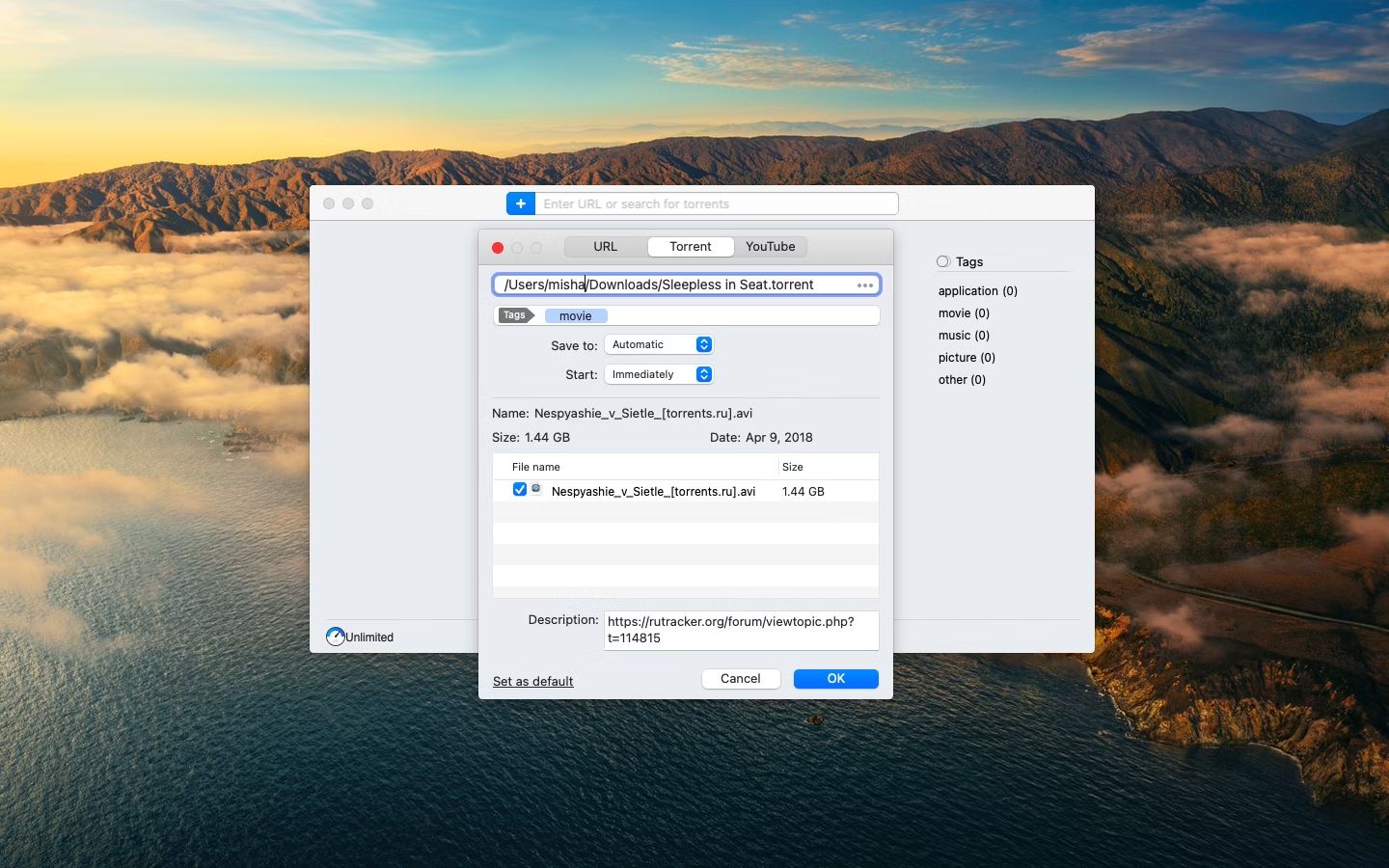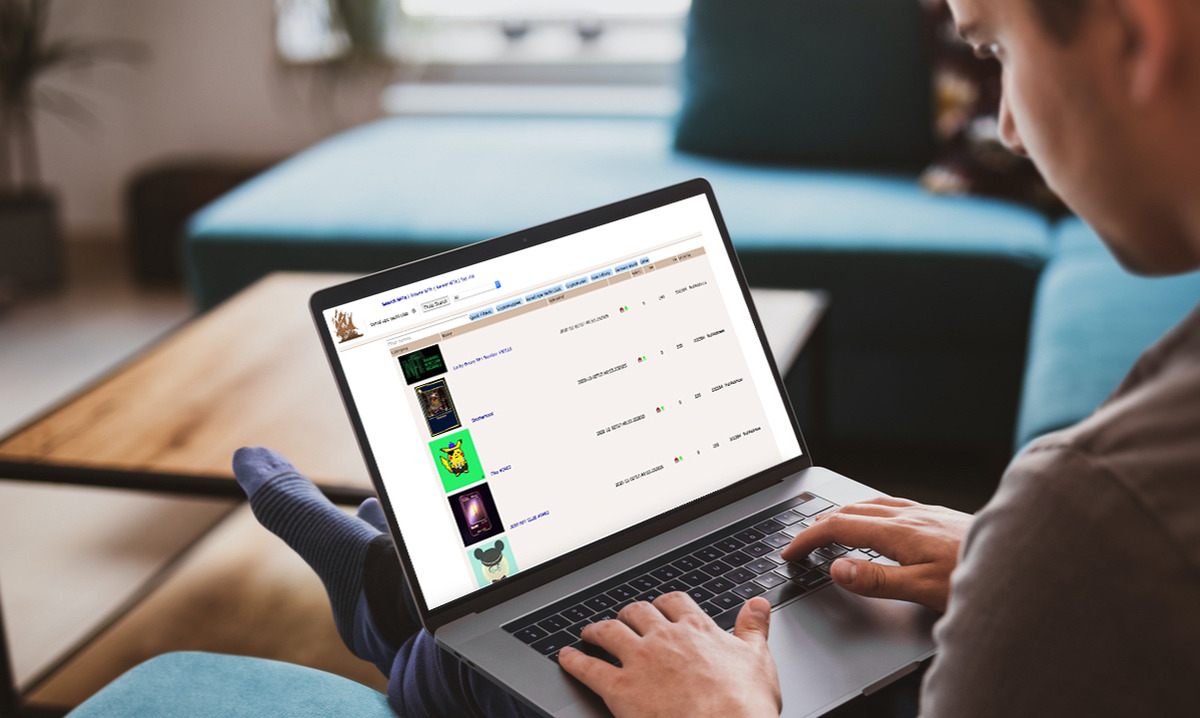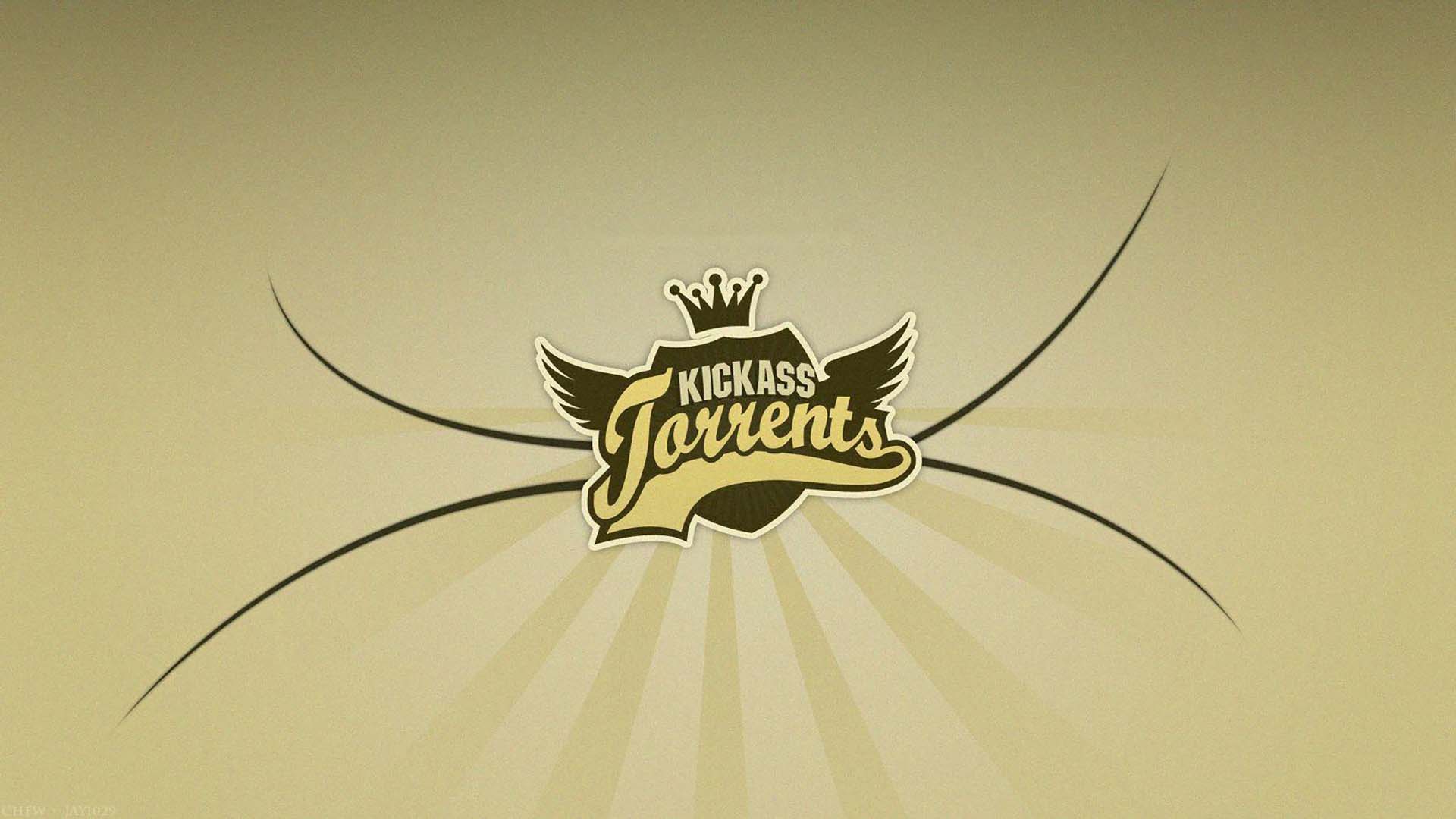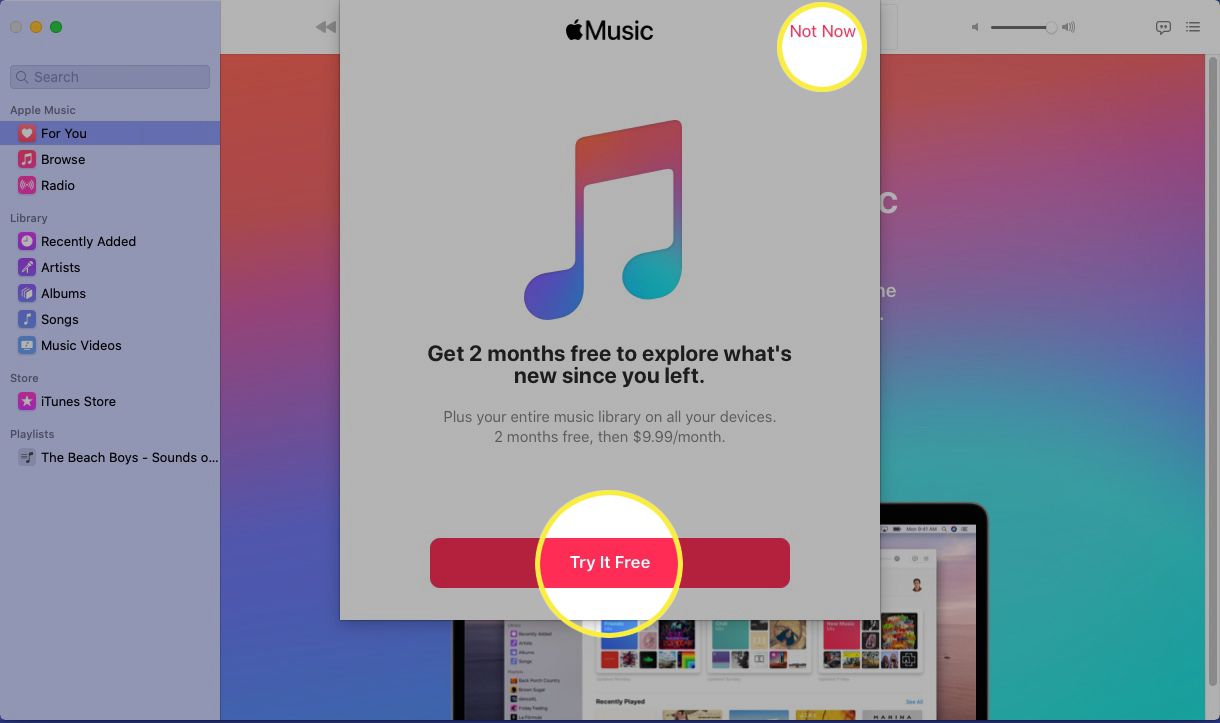Introduction
Have you ever wanted to download a movie, a TV show, or a software program but couldn’t find a reliable source? Torrent files can be the solution you’re looking for. Torrents allow users to share and download files quickly and efficiently by distributing the file across multiple sources. Whether you’re a newbie or an experienced internet user, learning how to download a torrent file can open up a world of possibilities for accessing a wide variety of content.
A torrent file is a small metadata file that contains information about the actual file you want to download. It doesn’t actually contain the file itself but acts as a guide for your computer to connect to other computers or peers that have the desired file. By leveraging the power of peer-to-peer (P2P) technology, you can download files from multiple sources simultaneously, which can significantly speed up the download process.
To get started with downloading torrent files, you’ll need a torrent client, which is a software program that allows you to connect to other computers and exchange data with them. There are several popular torrent clients available, such as uTorrent, BitTorrent, and qBittorrent. These clients provide a user-friendly interface for managing your downloads.
In this guide, we’ll walk you through the steps of finding a torrent client, installing it on your computer, searching for torrent files, downloading the desired file, and managing your downloaded files. We’ll also provide some troubleshooting tips for common issues you may encounter along the way.
Before we dive into the details, it’s important to note that while downloading torrent files is legal, it’s essential to respect copyright laws and only download files that you have the rights to or are in the public domain. Be mindful of the content you download and ensure that you’re not infringing on someone else’s intellectual property.
Now that we’ve covered the basics, let’s get started on our journey to learn how to download a torrent file!
What is a Torrent File?
A torrent file is a small metadata file that contains information about a specific file that you want to download. It acts as a guide for your computer to connect to other computers or peers that have the desired file, enabling you to download it using a torrent client.
Unlike traditional file downloads that rely on a central server, torrents utilize a peer-to-peer (P2P) network. This means that instead of downloading the file from a single source, you simultaneously download different parts of the file from multiple sources. This decentralized approach allows for faster and more efficient downloads.
When you open a torrent file, it does not contain the actual content you want to download. Instead, it contains important information such as the file name, file size, file type, the location of the tracker, and a list of peers who have the file or are in the process of downloading it.
The tracker is a server that helps coordinate the communication between peers. It keeps track of the available peers, their download progress, and facilitates the sharing of data. By connecting to the tracker, your torrent client can establish connections with other peers and start downloading or sharing pieces of the file.
One of the key advantages of using torrents is the ability to download large files more efficiently. Since a file is broken down into smaller pieces, you can download those pieces simultaneously from multiple sources. This helps to maximize your download speed, especially when there are many peers sharing the file.
Torrent files also support features like resumable downloads and the ability to prioritize specific files within a torrent. If a download gets interrupted or you need to pause and resume it later, the torrent client can pick up where it left off without having to start the entire download from scratch.
It’s important to note that torrent files are not limited to any specific type of content. You can find torrents for movies, TV shows, music, software programs, games, ebooks, and more. However, it’s essential to be cautious and only download files that are legal and from reliable sources.
Now that you have a better understanding of what a torrent file is and how it works, let’s explore how to find and install a torrent client to start downloading your desired files!
Finding a Torrent Client
Before you can start downloading torrent files, you’ll need to find and install a torrent client on your computer. A torrent client is a software program that enables you to connect to other computers and exchange data using the BitTorrent protocol.
There are several popular torrent clients available, each with its own features and user interface. Here are a few well-known options:
- uTorrent: Known for its lightweight and easy-to-use interface, uTorrent is one of the most popular torrent clients available. It offers a wide range of features, including the ability to prioritize downloads, schedule downloads, and limit bandwidth usage.
- BitTorrent: Developed by the creators of the BitTorrent protocol, BitTorrent is another widely used torrent client. It offers features such as remote access, RSS feeds for automatic downloading, and the ability to create and share your own torrent files.
- qBittorrent: An open-source alternative to uTorrent and BitTorrent, qBittorrent provides a clean and user-friendly interface. It supports multiple platforms and offers features like sequential downloading, torrent prioritization, and built-in torrent search.
To find a torrent client, you can perform a web search for the specific client you’re interested in or visit the official website of the client. On the official website, you’ll typically find a download page where you can choose the version of the client compatible with your operating system.
Before downloading the torrent client, ensure that you’re downloading from a trusted source. Check for user reviews and ratings to verify the legitimacy and safety of the client. It’s always a good idea to download software from the official website or reputable download platforms to avoid downloading any malicious or fake software.
Once you’ve chosen a torrent client and downloaded the installation file, you’re ready to install it on your computer. The installation process is usually straightforward and similar to installing any other software program. Just follow the on-screen instructions provided by the installer to complete the installation.
Now that you’ve installed a torrent client, you’re ready to explore the world of torrenting. In the next section, we’ll discuss how to search for torrent files using your newly installed torrent client.
Installing the Torrent Client
Now that you have downloaded the installation file for your chosen torrent client, it’s time to install it on your computer. The installation process typically involves a few simple steps, and once completed, you’ll be ready to start using the torrent client to download files.
Here’s a step-by-step guide to help you through the installation process:
- Locate the downloaded installation file on your computer. It is usually saved in your Downloads folder or in the location specified during the download process.
- Double-click on the installation file to initiate the installation process. You may be prompted with a security warning, depending on your operating system. Click “Run” or “Yes” to proceed.
- Follow the on-screen instructions provided by the installer. The installation wizard will guide you through the necessary steps to install the torrent client.
- Choose the destination folder where you want to install the torrent client. You can either use the default folder or select a different location on your computer.
- Review and accept the terms and conditions if prompted. Read through the license agreement and tick the box indicating your acceptance before proceeding.
- Click on the “Install” or “Next” button to initiate the installation process. The progress indicator will show you the installation status, and you may need to wait for a few moments for the installation to complete.
- Once the installation is finished, you may be prompted to launch the torrent client. If not, you can manually locate the program in your Start menu or desktop shortcut and click on it to open the application.
After the torrent client is launched, you may be presented with some initial setup options. These options can include selecting the preferred language, configuring bandwidth settings, and choosing the download folder. Take a moment to customize the settings based on your preferences, or you can stick with the default settings if you’re unsure.
With the installation process complete, you now have a torrent client installed and ready to use. In the next section, we’ll explore how to search for torrent files using your newly installed torrent client.
Searching for Torrent Files
Now that you have installed a torrent client on your computer, it’s time to start searching for the torrent files you want to download. Torrent files can be found on various websites known as torrent trackers or indexes. These sites act as search engines for torrent files, allowing you to find and access a wide variety of content.
When searching for torrent files, it’s important to keep a few things in mind:
- Choose a Reliable Torrent Site: Look for reputable torrent sites that have a good track record of providing reliable and high-quality torrents. Popular torrent sites include The Pirate Bay, 1337x, RARBG, and Torrentz2.
- Read User Reviews and Ratings: Before downloading a torrent file, it’s beneficial to check the user reviews and ratings. This can give you insights into the quality and authenticity of the content, as well as any potential issues or concerns raised by other users.
- Use Specific Keywords: When searching for a specific file, make sure to use accurate and specific keywords to narrow down the search results. Including the file name, the name of the artist, or the title of the TV show can help you find what you’re looking for more efficiently.
- Filter and Sort Search Results: Torrent sites usually provide options to filter and sort search results based on factors like seeders, leechers, file size, and upload date. Utilize these features to find the most reliable and well-seeded torrent files.
Once you have chosen a torrent site, follow these steps to search for torrent files:
- Open your web browser and navigate to the selected torrent site.
- Locate the search bar or search field on the site’s homepage.
- Enter the keywords or the name of the file you want to download.
- Click the search button or press the Enter key to initiate the search.
- Browse through the search results to find the desired torrent file. You can usually see information such as file size, number of seeders, and user ratings.
- Click on the download button or the magnet link associated with the torrent file you wish to download.
- Your torrent client will automatically open and prompt you to confirm the download. Click “OK” or “Yes” to start downloading the file.
It’s important to note that while torrenting itself is legal, downloading or sharing copyrighted material without permission is generally considered illegal in most countries. Always ensure that you are downloading legal and copyright-free content.
Now that you know how to search for torrent files, let’s move on to the next section, where we’ll discuss the process of downloading the torrent file you have chosen.
Downloading the Torrent File
After you have found the desired torrent file, it’s time to download it using your torrent client. The torrent client will handle the process of connecting to other peers and downloading the file in small pieces from multiple sources simultaneously.
Here are the steps to download a torrent file:
- Make sure your torrent client is open on your computer.
- Click on the magnet link or the download button associated with the torrent file you wish to download.
- Your torrent client will automatically open and display a dialog box asking for confirmation. Click “OK” or “Yes” to start the download.
- The torrent client will then connect to the peers and start downloading the file. You can track the progress of the download in the torrent client’s interface.
- By default, the torrent client will prioritize downloading the initial parts of the file, which are crucial for starting the playback or installation process. Depending on the size of the file and the number of seeders, the download speed may vary. Be patient and allow the download to complete.
- Once the download is complete, the torrent client will continue to seed the file. Seeding means that you are sharing the downloaded file with other peers who are still in the downloading process. Consider leaving the torrent client open to help distribute the file to other users.
During the download process, you may have the option to prioritize certain files within the torrent if it is a multi-file torrent. This allows you to focus on downloading specific files first, especially if you only need or want a particular part of the content.
It’s important to note that the download speed of a torrent file depends on several factors, including the number of seeders (users who have already downloaded the file and are sharing it) and the health of the file. Files with a higher number of seeders generally have faster download speeds.
Once the download is complete, you can locate the downloaded files in the folder you specified during the installation process or in the default download folder set by the torrent client.
Now that you have successfully downloaded the torrent file, the next section will guide you through monitoring the download progress and managing the downloaded files.
Monitoring the Download Progress
As you download a torrent file using your torrent client, it’s essential to monitor the download progress to ensure everything is running smoothly and efficiently. Most torrent clients provide a user-friendly interface that allows you to track the download progress and manage your downloads effectively.
Here are some key features and tips for monitoring the download progress:
- Downloading Speed: The torrent client displays the current download speed, usually measured in kilobytes per second (KB/s) or megabytes per second (MB/s). This information gives you an idea of how fast the file is downloading. Keep in mind that the download speed may vary depending on the number of seeders and your internet connection.
- Seeding Ratio: Once a torrent file is downloaded, it is good torrenting etiquette to leave the file seeding, i.e., allowing it to upload to other peers. The torrent client typically displays the seeding ratio, which is the ratio of how much you have uploaded (seeded) compared to how much you have downloaded. A higher seeding ratio is generally seen as more favorable in the torrenting community.
- Health of the Torrent: Torrent clients often indicate the health of the torrent based on the number of seeders and peers available. A higher number of seeders generally indicates a healthier and more reliable torrent. A low number of seeders may result in slower download speeds or even a stalled download.
- Progress Bar and Estimated Time: The torrent client typically displays a progress bar indicating the completion percentage of the download. Additionally, it often provides an estimated time remaining for the download to complete. This feature gives you an idea of how long you’ll need to wait before the file is fully downloaded.
- Pause, Resume, and Cancel: Most torrent clients allow you to pause, resume, or cancel downloads. You can pause a download if you want to allocate more bandwidth to other tasks or resume it later. If you decide not to download a file anymore, you can cancel the download to remove it from your list of active downloads.
Regularly check the download progress and take note of any issues or warnings that the torrent client displays. Pay attention to the health of the torrent, the number of seeders, and the download speed to assess the quality of the file and the estimated time for completion.
It’s worth noting that download speeds can vary depending on various factors, such as the number of seeders, the size of the file, and your internet connection. Be patient and allow the download to complete, especially if it’s a large file or if there are limited seeders available.
With the ability to monitor your download progress, you can ensure a smooth and hassle-free downloading experience. In the next section, we’ll explore how to manage the downloaded files effectively.
Managing the Downloaded Files
Once you have successfully downloaded a torrent file, it’s important to manage the downloaded files effectively to keep your downloads organized and easily accessible. Proper file management allows you to locate and use your downloaded content efficiently.
Here are some tips for managing your downloaded files:
- Choose a Download Location: When you start a download in your torrent client, it will prompt you to choose a download location. It’s a good practice to select a specific folder on your computer where you want the downloaded files to be saved. You can also create separate folders for different types of downloads to keep everything organized.
- Rename Files: Torrent files often come with long and complex names, especially if they are ripped from a website or a collection. Consider renaming the files to something more recognizable and descriptive. This will make it easier to identify and locate the downloaded content later.
- Move or Copy Files: Once the download is complete, you can move or copy the downloaded files to a different folder or location on your computer. For example, you may want to transfer them to an external hard drive or a different directory for better organization or easy access.
- Delete Unnecessary Files: If you have downloaded multiple files within a torrent but only need specific ones, you can delete the unnecessary files. However, be cautious not to delete any critical files that the torrent client requires for the downloaded content to function correctly.
- Seed and Share: If you want to contribute to the torrenting community, you can choose to keep the downloaded files in the torrent client and share them with other peers. This helps maintain a healthy torrent ecosystem by ensuring the availability of files for other users.
Proper file management enables you to have a well-organized library of downloaded content. By organizing, renaming, and moving files to appropriate locations, you can easily navigate and enjoy your downloaded files.
Additionally, consider creating backup copies of your important downloaded files. This ensures that even if a file is accidentally deleted or lost, you can restore it from your backup and avoid the need for re-downloading.
By effectively managing your downloaded files, you can maintain a clutter-free system, easily find and access your content, and make the most out of your torrenting experience.
Congratulations! You’ve learned how to download torrent files, monitor the download progress, and manage the downloaded files. In the next section, we’ll provide some troubleshooting tips for common issues you may encounter while using torrent clients.
Troubleshooting Common Issues
While torrenting can be a convenient way to download files, you may encounter some common issues along the way. Here are some troubleshooting tips to help you address these issues and ensure a smoother torrenting experience:
- Slow Download Speed: If you’re experiencing slow download speeds, there are a few potential causes. Firstly, check your internet connection to ensure it’s stable and running at its expected speed. You can also try connecting to different seeds with higher uploading speeds, as this can improve your download speed. Additionally, consider adjusting the bandwidth settings in your torrent client to allocate more resources to downloading.
- No Seeds or Peers: If you’re unable to connect to any seeds or peers for a specific torrent, it may indicate that the file is not actively being shared. In this case, you can try searching for alternative torrents with more active seeders or peers. Additionally, make sure that your torrent client is not blocked by any firewalls or antivirus software, as this can sometimes interfere with the connection.
- Incomplete or Corrupted Downloads: In some cases, a download may be incomplete or corrupted due to various reasons. To address this issue, you can try pausing and resuming the download, which can sometimes help to reestablish connections and complete the download. Alternatively, you may need to find a different torrent with a more reliable source or check for any issues with the file itself.
- Disk Space Issues: If you’re running out of disk space on your computer, it can cause issues with downloading and managing torrent files. Make sure you have enough available disk space for the size of the file you’re downloading. Consider deleting unnecessary files or moving files to an external storage device to free up space.
- Torrent Client Errors: Sometimes, torrent clients may encounter specific errors during installation or while downloading files. Ensure that you’re using the latest version of the torrent client and check the official documentation or online forums for troubleshooting guides specific to your issue. Reinstalling the client can also help resolve certain software-related issues.
If you continue to encounter issues despite following these troubleshooting tips, it may be helpful to reach out to the community or support forums for the specific torrent client you are using. Other users and experts can provide insights and assistance to address your concerns.
Remember to always download files from reputable sources and be cautious of copyright infringement. Respect the rights of content creators and only download files that you have the legal right to access.
By troubleshooting common issues and taking necessary precautions, you can make the most out of your torrenting experience and enjoy the benefits of accessing a wide range of content.
Now that you’re equipped with these troubleshooting tips, you’re ready to dive into the world of torrenting with confidence. Happy torrenting!
Conclusion
Downloading torrent files can be a powerful and efficient way to access a wide variety of content. By leveraging the peer-to-peer network, you can download files quickly and easily. Throughout this guide, we have covered the essential steps and considerations for downloading torrent files.
We began by understanding what a torrent file is and how it works. We explored the process of finding and installing a torrent client on your computer. We learned how to search for torrent files, download them, monitor the download progress, and manage the downloaded files effectively. We also provided troubleshooting tips for common issues that may arise during the torrenting process.
It’s important to remember that torrenting carries certain responsibilities. Always prioritize downloading legal and copyright-free content and respect the rights of the content creators. Be mindful of the laws and regulations in your jurisdiction regarding torrenting activities.
With the knowledge and understanding gained from this guide, you can now confidently embark on your torrenting journey. Explore different torrent websites, download files that interest you, and enjoy the convenience and access to a world of content.
Torrenting can be a transformative way to access and share information, but it’s crucial to use it responsibly and ethically. Stay updated with the latest developments and best practices in torrenting to ensure a safe and enjoyable experience.
Remember to prioritize your online security and privacy by using reputable torrent clients, maintaining up-to-date antivirus software, and being cautious of malicious downloads. Furthermore, consider using a VPN (Virtual Private Network) to encrypt your internet connection and enhance your privacy while torrenting.
By following the guidelines in this guide, you can make the most out of your torrenting experience while staying safe and respectful of others’ rights. Happy torrenting!














![10 Best Non-Blocked Torrent Sites To Try Now [2020 Edition]](https://robots.net/wp-content/uploads/2019/08/torrent-35656_1280-170x170.png)










